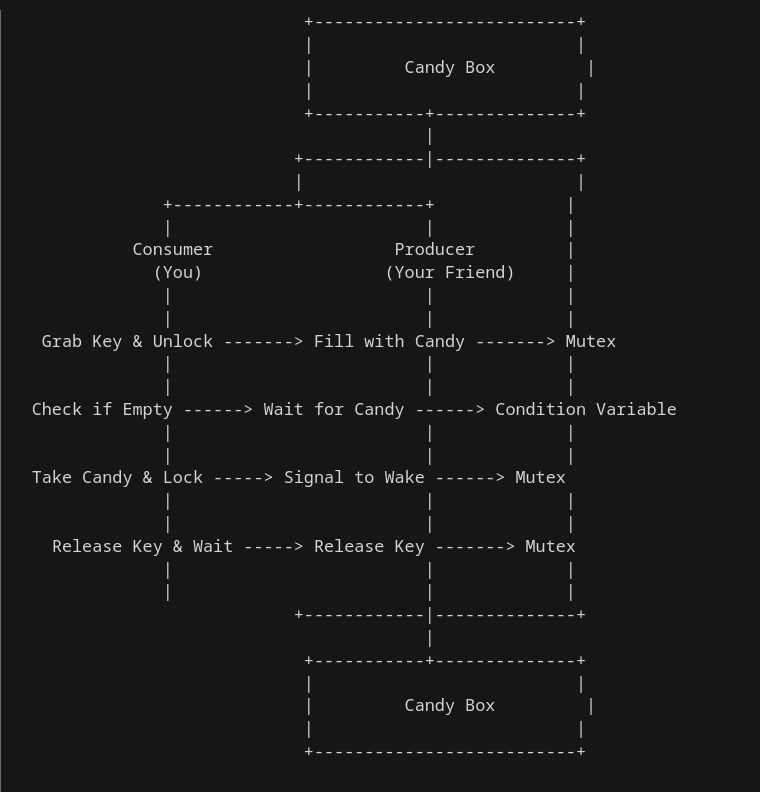
Introduction: The Synchronization Conundrum 🤔
Greetings, tech aficionados! If you’re intrigued by the concept of multi-threaded programming, then you’ve undoubtedly encountered the quintessential elements of Mutex and Condition Variables. These constructs are fundamental in achieving thread synchronization, yet they often come across as cryptic. Today, let’s unravel their mysteries through a high-level yet relatable analogy: the Candy Box Game.
The Scenario: Life Is Like a Box of Candies 🍭
The Participants 🙋♂️🙋♀️
You (Consumer Thread): Your task is to unlock a candy box, retrieve a candy, and lock the box again.
Your Friend (Producer Thread): Their role is to unlock the candy box, place a candy inside, and lock it once more.
Ground Rules 📜
- A singular candy box that is initially locked.
- Only one unique key that can lock or unlock this box.
The Technical Analogy: Concurrency in Action 🎭
Consumer Thread (You)
Mutex Acquisition: You grab the key, signifying that you now have exclusive access to the candy box (the shared resource).
Check Predicate: With the box unlocked, you evaluate its contents. If it’s empty, you must wait—enter the Condition Variable.
Blocking and Mutex Release: At this point, you block your thread and relinquish control of the Mutex, allowing the Condition Variable to free up the resource for another thread to manipulate.
Resource Manipulation: Upon being signaled, you once again check the box’s content and proceed to consume the candy.
Mutex Release: Finally, you release the Mutex, opening the door for other threads (i.e., your friend) to interact with the box.
Producer Thread (Your Friend)
Mutex Acquisition: Your friend seizes the key and gains exclusive access to the box.
Resource Modification: They place a candy in the box.
Condition Variable Signal: A signal is emitted, alerting waiting threads (you, in this case) that the resource state has changed.
Mutex Release: The Mutex is then released, granting access to other waiting threads.
Deep Dive: The Technical Nuances 🛠
Mutex: The Gatekeeper 🔐
The Mutex (Mutual Exclusion) is akin to the unique key in this analogy. It prevents more than one thread from accessing the shared resource (candy box) simultaneously. Prior to manipulating the shared resource, a thread must acquire the Mutex.
Condition Variables: The Synchronizers 🔄
Condition Variables are used when threads need to wait for a particular condition to be met. They put the thread to sleep while also releasing the Mutex, thereby allowing other threads to modify the shared resource. When the condition is fulfilled, the thread is awakened and reacquires the Mutex.
Conclusion: Paradigms for Complex Synchronization 🌐
The Candy Box Analogy serves as a potent framework for comprehending Mutexes and Condition Variables, two pivotal components in the domain of multi-threading. While different problems may require unique structures and flow controls, the essential logic behind utilizing Mutex and Condition Variables remains constant.
So, the next time you find yourself entangled in the complexities of thread synchronization, remember that you already have the key—quite literally!
Was this analogy effective in demystifying Mutex and Condition Variables? Share your thoughts and experiences below. Let’s make the intricate world of thread synchronization a bit more approachable! 🌟
